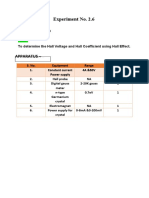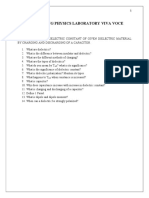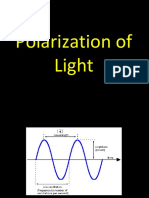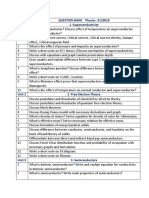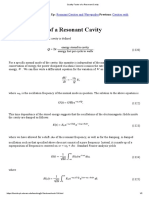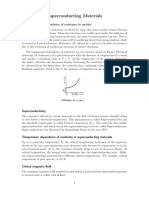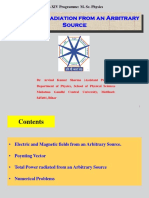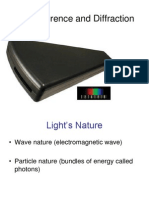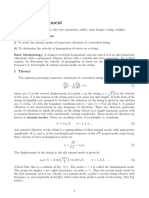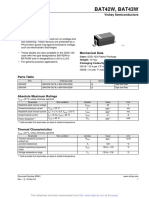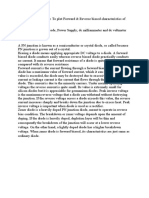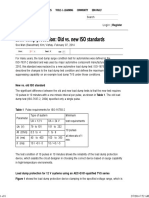Laboratory report
THE PROPERTIES OF DIELECTRIC MATERIALS
Objective:
The purpose of this experiment is to determine the capacitance of dielectric materials and relative
permittivity.
Theory:
Dielectrics are materials that define most of the parameters of capacitors, such as capacitance, loss
factor, voltage capacities etc. When a dielectric is placed in an electric field, electric charges do not
flow through the material as they do in a conductor, but only slightly shift from their average
equilibrium positions causing dielectric polarization. Because of dielectric polarization, positive
charges are displaced toward the field and negative charges shift in the opposite direction. This creates
an internal electric field that reduces the overall field within the dielectric itself. If a dielectric is
composed of weakly bonded molecules, those molecules not only become polarized, but also reorient
so that their symmetry axes align to the field.
The electric susceptibility e of a dielectric material is a measure of how easily it polarizes in response
to an electric field. This, in turn, determines the relative permittivity of the material
=1+ e ,(1)
and thus influences many other phenomena in that medium, from the capacitance of capacitors to the
speed of light.
It is defined as the constant of proportionality relating an electric field E to the induced dielectric
polarization density P such that
P= 0 e E ,(2)
where 0 is the vacuum permittivity.
Commercially manufactured capacitors typically use a solid dielectric material with high permittivity
as the intervening medium between the stored positive and negative charges. This material is often
referred to in technical contexts as the capacitor dielectric. The capacitance of a device depends on the
geometric arrangement of the conductors. The capacitance of a parallel-plate capacitor with plates
separated by air can be expressed as follows:
S
C= 0 ,(3)
d
where the constant 0 is known as the vacuum permittivity = 8.85 10-12 F/m, S - area of each
conductive plate, d distance between the plates.
If all the space between the electrodes is filled with homogeneous dielectric, the homogeneous electric
field strength is estimated as
U
E= ,(4 )
d
where U voltage between the electrodes of the capacitor.
1 | Page
�If this space is filled with an air of thickness d1 and d2 is the
thickness of the dielectric (see Fig. 1), the equation for the
voltage of the capacitor becomes as
U=E 1 d 1 + E2 d 2 ,(5)
From the electrostatics, it is known that the following
equality is valid for this case:
'
E1= E 2 ,(6)
Fig. 1
where - relative permittivity of air. By solving the equations (5) and (6), we get electric field estimated
as
U
E1=
(7)
d 1 + d 2
and
'
U
E2=
( 8)
'
d 1 + d 2
In this case (Fig. 1) the capacitor is composed of two capacitors connected in series, which separate
capacitances are equal
' S
S
C1 = 0
C 2= 0 .
d1
d2
The total capacitance is calculated as
d
d
1 1 1 1
= + = 1' + 2 .(9)
C C1 C 2 C 0 s 0 S
And the relative permittivity expressed from the equation (8) is:
' C 2
= '
,(10)
0 SC d 1
where ' is equal to 1 for air.
Procedure:
The measuring equipment is consisted from parallel plate capacitor and capacitance meter. The
capacitance is measured in picofarads (1 pF = 10-12 F). The voltage of the condenser is equal to 9 V (U
= 9 V). 4 plates from dielectric materials (PVC, cardboard, etc.)
Sequence of the experiment:
1. The Measuring equipment was plugged into electricity power.
2 | Page
�2. The capacitance of the capacitor was measured. The relative permittivity of the air was
calculated by using equation (3) and compared with theoretical relative permittivity of the air.
3. The thickness of dielectric plates was measured by micrometer caliper.
4. The organic glass plate was added between the capacitors electrodes.
5. The capacitance of the capacitor with a dielectric was measured. The relative permittivity of the
organic glass was calculated by using equation (3) and compared with theoretical relative
permittivity of the organic glass.
6. The experiment was experiment was repeated with all remaining dielectric plates (Cardboard,
getinax, PVC)
7. The data was analyzed, used in calculations and comparisons.
Results:
Table 1.
S=9103 m 2
d=4 103 m
Materials
Air
d2,(m)
d1,(m)
40 10
20 10
12
1.00
4
0.004
2250
321012
1.97
5
0.975
1830.6
1.579108
C,(F)
E, (V/m)
P, (C/m2) 4
10
7.96510
Organic
glass
3.06 103
Cardboar
d
1.77 10
2.23 10
26 10
12
2.12
4
1.124
1383.2
1.376 10
Getinax
3.2 103
0.8 103
34 1012
2.07
4
1.074
1852.16
1.76 108
Polyvinyl
chloride
(PVC)
1.78 10
12
2.11
1.11
1392.2
1.37 10
0.94 103
2.2210
26 10
d2 the thickness of dielectric plate.
d1 the thickness of the free space between capacitors electrode and the dielectric material.
3 | Page
�C capacity of the capacitor is measured with measuring equipment.
(1).
relative permittivity of the dielectric is calculated with equation (10)
'
C 2
.
'
0 SC d 1
Ex. (organic glass)
organic glass=
(2).
1 321012 3,06 103
=1.975
(8.85 1012 1 9.103 )(321012 0,94 1012 )
electric susceptibility of a dielectric material is calculated with equation (1)
=1+
> = 1
Ex. (cardboard )
cardboard =2.1241=1.124 (cardboard )
(3). E electric field strength of dielectric is calculated with equation (8)
E=
' U
d 1 + ' d 2
Ex. (Getinax)
E getinax=
1 9
V
=1852.16
3
3
m
2.074 0.8 10 +1 3.2 10
(4). P dielectric polarization density is calculated with equation (2)
P= 0 e E
Ex. (PVC)
12
PPVC =8.85 10
1.11 1392.2=1.37 10
C
m2
Table 2.
4 | Page
�Material
theoretical
practicle
Air
1.000594
1.004
2.5 4
1.975
23
2.124
Getinax
2.5 6
2.074
Polyvinyl chloride
(PVC)
Conclusion:
3.1 4
2.11
Organic glass
Cardboard
The control (air) dielectrics permittivity as expected was almost identical to the theoretical value. In
comparison the values of dielectric permittivity in all the dielectric material samples are roughly the
same. In addition, only the half of the dielectric materials fit the given theoretical dielectric permittivity
value range. These include Cardboard (which fit the rage perfectly) and Getinax (which practical value
is off be a small amount). And the other two (Organic glass and PVC) are smaller than the given
theoretical value.
The electric field strength is directly proportional to the thickness of the dielectric. The thicker the
material the bigger the strength. The dielectric polarization density is directly proportional to the
electric field strength; thus the influence is of thickness of the dielectric material is the same.
This experiment did not show the influence of relative permittivity to the electric field strength and
dielectric polarization density. This is because the values of relative permittivity of dielectric materials
are similar to each other (the average value is around 2.1)
NOTE: The data of Getinax and Organic glass are proportional and similar, thus almost the same.
The factors that had negative effect on the precision of the experiment were: outdated measuring
equipment of capacity of the capacitor; damaged and/or deformed dielectric material plates.
To improve the laboratory work: modern measuring equipment of capacity of the capacitor with
adjustable variables (voltage, the space between capacitor electrodes and area of electrodes); a bigger
variety of dielectric materials (Thickness and other materials).
References:
https://en.wikipedia.org/wiki/Dielectric#Capacitors (2016-09-23)
https://en.wikipedia.org/wiki/Capacitor (2016-09-23)
5 | Page
https://accessengineeringlibrary.com/browse/capacitors/c9780071848565ch02 (2016-09-23)
Laboratory work THE PROPERTIES OF DIELECTRIC MATERIALS
6 | Page












